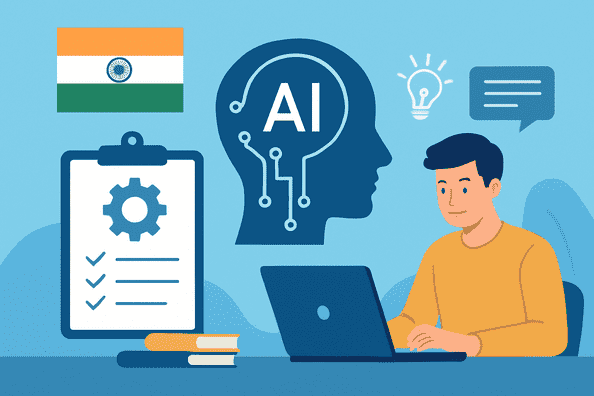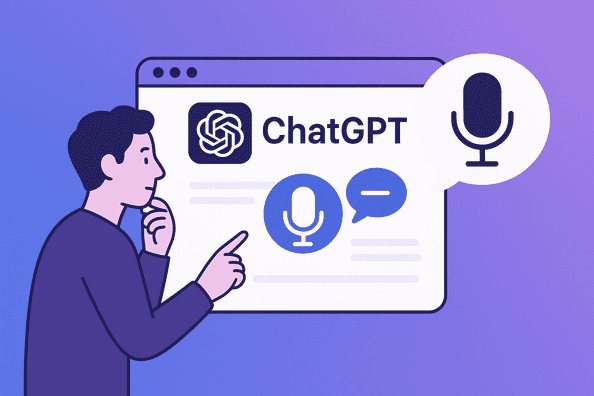In today’s rapidly evolving digital landscape, businesses are increasingly turning to bespoke AI solutions for niche digital workflows to gain a competitive edge and streamline their operations. Unlike generic AI tools that offer one-size-fits-all functionality, custom-built artificial intelligence systems are meticulously crafted to address specific challenges unique to particular industries, processes, or organizational needs. These tailored solutions leverage the power of machine learning, natural language processing, and advanced analytics to automate complex tasks, enhance decision-making capabilities, and drive innovation across various sectors. By focusing on the distinct requirements of specialized workflows, bespoke AI delivers more accurate results, improves operational efficiency, and provides a significantly higher return on investment compared to off-the-shelf alternatives.
Understanding the Value of Custom AI Development
The distinction between generic and bespoke AI solutions lies in their fundamental approach to problem-solving and implementation. Off-the-shelf AI products are designed for broad applicability, offering quick deployment but often lacking the precision required for specialized industry challenges. These general-purpose tools may provide immediate functionality but frequently fall short when confronted with the nuanced complexities of niche business processes. In contrast, custom AI development involves building models from the ground up, training them on specialized datasets that reflect the unique patterns and requirements of specific industries or workflows. This tailored approach ensures higher accuracy, better adaptability, and deeper integration with existing business systems, creating solutions that evolve alongside organizational needs.
The investment in bespoke AI represents a strategic decision that extends beyond immediate operational improvements. While custom development requires a higher initial investment in time, resources, and expertise, it often leads to substantial long-term efficiency gains, enhanced accuracy, and improved automation capabilities. Organizations that make this investment gain a competitive advantage by leveraging AI that aligns perfectly with their operational goals rather than settling for generic solutions that only partially address their needs. The decision between pre-built and custom AI ultimately depends on a company’s specific objectives, budget constraints, and long-term vision for technological integration.
Key Benefits of Implementing Tailored AI Workflows
Bespoke AI solutions deliver substantial financial advantages by significantly reducing operational costs through intelligent automation of repetitive tasks. By streamlining workflows and minimizing human errors, these custom systems allow businesses to optimize resource allocation and focus human talent on more strategic initiatives. Research indicates that companies implementing smart AI solutions report ROI ranging from 30% to 200% within the first year of deployment, creating meaningful financial advantages across various operational areas. Additionally, AI-powered workflow automation contributes to dramatic productivity gains, with industries having the highest AI integration witnessing 4.8 times greater labor efficiency growth.
Beyond cost reduction, custom AI solutions drive revenue growth by enabling businesses to better understand consumer behavior, personalize marketing efforts, and improve sales conversion rates. AI-driven recommendation engines increase customer engagement by providing relevant product suggestions, while predictive analytics help companies anticipate market trends and customer needs with greater precision. The operational benefits extend to risk mitigation and loss prevention, with AI-powered systems helping businesses identify potential threats before they materialize. For example, fraud detection systems in banking prevent unauthorized transactions, while predictive maintenance in manufacturing reduces equipment failures and associated downtime.
AI Implementation Costs and ROI Comparison
| AI Solution Type | Typical Cost Range | Expected ROI Timeline | ROI Percentage Range | Key Benefits |
| Basic AI Solutions (Chatbots, Recommendation Engines) | $20,000 – $80,000 | 6 – 12 months | 30% – 100% | Quick deployment, improved customer engagement, basic automation |
| Intermediate AI Applications (Risk Management, Workflow Automation) | $50,000 – $150,000 | 12 – 18 months | 50% – 150% | Enhanced process efficiency, better decision-making, reduced errors |
| Advanced Bespoke AI Solutions (Industry-specific, Complex Workflows) | $100,000 – $500,000+ | 18 – 36 months | 100% – 200%+ | Tailored automation, predictive analytics, significant operational gains |
Industry-Specific Applications of Bespoke AI
Healthcare organizations are leveraging custom AI models to address unique challenges in patient care, medical research, and administrative efficiency. These specialized systems analyze patient data to predict disease outcomes, optimize treatment plans, and identify at-risk individuals with greater accuracy than generic solutions. For instance, IBM Watson for Oncology assists oncologists by analyzing medical literature, clinical trial data, and patient records to suggest personalized treatment plans based on each patient’s unique profile. This level of customization is particularly valuable in healthcare, where patient data varies significantly and treatment decisions have profound consequences.
In manufacturing, bespoke AI solutions are revolutionizing production processes through predictive maintenance, quality control, and supply chain optimization. Custom models trained on equipment-specific data can predict failures and recommend maintenance schedules tailored to each machine, minimizing downtime and extending asset life. AI-driven inspection systems adapt to product-specific quality parameters, identifying defects with greater accuracy than generic models and enabling continuous quality monitoring across production runs. By benchmarking energy performance across facilities, manufacturers can identify inefficiencies and implement targeted improvements, leading to significant cost savings and environmental benefits.
Overcoming Implementation Challenges
Successful AI implementation requires addressing several common challenges, beginning with data quality and availability. Poor data quality—characterized by inaccuracies, inconsistencies, or incomplete records—can lead to unreliable insights and flawed decision-making. Organizations must invest in robust data management practices, including data cleaning, standardization, and governance frameworks to ensure their AI systems have access to high-quality information. Additionally, bias in AI is a pressing concern that carries both ethical and operational risks. If training data reflects historical biases, AI models can perpetuate or even amplify discrimination, leading to unfair outcomes.
Integration with existing IT infrastructure presents another significant hurdle for many organizations. Legacy systems often create compatibility issues, making it difficult to incorporate AI-driven applications seamlessly. Businesses must assess their infrastructure needs, invest in cloud-based or hybrid solutions, and ensure they have the computational resources necessary to support AI initiatives. Without a well-integrated environment, AI adoption efforts may face delays, inefficiencies, or even failure. Addressing these technical challenges requires a strategic approach that includes thorough planning, gradual implementation, and continuous monitoring to ensure smooth integration with existing systems.
Building a Strong Foundation for AI Success
Establishing clear governance frameworks is essential for ensuring AI is used responsibly and ethically within an organization. Transparent AI systems not only build trust but also help companies comply with evolving regulatory requirements, which is increasingly important as AI becomes more prevalent in business operations. Organizations should develop comprehensive guidelines on AI accountability, specifying decision-making responsibilities and validation processes to maintain oversight of automated systems. Additionally, focusing on explainability—ensuring that AI models produce results that can be understood and justified—helps prevent regulatory scrutiny and stakeholder distrust.
Creating a culture that embraces AI adoption is equally important for long-term success. Many employees may resist new technologies due to fear of job displacement or unfamiliarity with AI tools. To overcome this resistance, organizations should invest in comprehensive training programs that help staff understand how AI can augment their work rather than replace it. Fostering an environment of transparency about AI implementation plans and demonstrating AI’s role in enhancing decision-making and operational efficiency can significantly reduce fears and build organizational confidence. By involving employees in the development and deployment process, companies can ensure greater acceptance and more effective utilization of AI technologies.
Cost Considerations and ROI Analysis
The financial investment required for bespoke AI implementation varies significantly based on project complexity, data requirements, and integration needs. Basic AI solutions, such as chatbots and recommendation systems, typically range from $20,000 to $80,000 and offer ROI within 6-12 months. More advanced applications, including risk management systems and workflow automation tools, generally cost between $50,000 and $150,000, with returns materializing within 12-18 months. Highly customized solutions for specialized industries or complex processes may require investments of $100,000 to $500,000 or more, but they also deliver the highest returns, often exceeding 100% ROI over an 18-36 month period.
Beyond initial implementation costs, organizations must consider ongoing operational expenses such as cloud storage fees, API access charges, periodic model retraining, and security updates. These recurring costs can add up significantly, making it crucial to develop a cost-efficient AI adoption strategy that accounts for both short-term and long-term financial implications. Companies should conduct thorough cost-benefit analyses before embarking on AI projects, identifying specific areas where automation can deliver the greatest value and prioritizing use cases with clear ROI potential. By leveraging cloud-based AI services, forming strategic partnerships, and utilizing automation tools, businesses can optimize their AI investments and maximize long-term value.
Top AI Workflow Automation Tools for 2025
The market offers a diverse range of AI workflow automation tools designed to meet various business needs and technical requirements. Zapier stands out as one of the most popular options, providing seamless integration with over 5,000 apps and allowing businesses to create automated workflows called “Zaps” without extensive technical knowledge. For marketing and sales teams, ActiveCampaign delivers comprehensive automation with built-in AI features for email marketing, customer relationship management, and sales processes. HubSpot offers an all-in-one CRM platform with AI-powered automation for marketing, sales, and customer service, helping businesses streamline operations across multiple departments.
Enterprise-grade solutions like Workato provide more robust capabilities for complex business environments. This platform combines integration and intelligent workflow automation, connecting applications and building sophisticated workflows with minimal coding requirements. For organizations already using Salesforce, Agentforce offers AI-driven workflow automation built specifically for the Salesforce ecosystem, using natural language processing to understand conversational requests and convert them into automated actions. UiPath, a leading Robotic Process Automation (RPA) platform, allows businesses to automate repetitive tasks using AI and machine learning, offering end-to-end automation solutions for enterprises seeking to enhance productivity and streamline operations.
The Rise of No-Code and Low-Code AI Development
The democratization of AI development through no-code and low-code platforms is transforming how businesses approach custom solutions. These accessible tools enable organizations to create and deploy AI models without extensive programming knowledge, significantly reducing the technical barriers to entry. Platforms like DataRobot offer automated machine learning capabilities that simplify the complex development of AI solutions, making them more accessible to those without coding expertise. Google AutoML provides intuitive interfaces for building custom machine learning models for specific business needs, while Apple CreateML allows developers to train models using simple drag-and-drop functionality.
For businesses seeking to implement AI in specialized workflows, these platforms offer a middle ground between off-the-shelf solutions and fully custom development. They provide the flexibility to address specific business challenges while requiring less technical expertise and investment than traditional AI development approaches. As these tools continue to evolve, they’re enabling smaller organizations and teams with limited resources to leverage the power of AI for their unique requirements. This democratization is driving innovation across industries, allowing more businesses to benefit from AI-powered automation and insights without the need for specialized data science teams.
AI Frameworks for Enterprise Implementation
Organizations looking to develop custom AI agents have access to several powerful frameworks designed for enterprise-scale implementation. LangChain stands out as a versatile framework for developing and deploying AI applications powered by Large Language Models (LLMs), offering comprehensive tools for text generation, translation, summarization, and question-answering. For businesses requiring structured AI teams working cohesively, CrewAI provides a framework that organizes AI agents as specialized workers, each assigned specific roles, goals, and tasks within a collaborative workflow. Microsoft’s Semantic Kernel offers seamless integration with the Microsoft ecosystem, making it ideal for large enterprises wanting to embed AI agents within their existing Microsoft tools and systems.
These frameworks vary in their strengths and applications, requiring careful consideration based on specific business needs. LangGraph excels in creating transparent, multi-step processes with human oversight, making it suitable for applications in customer support, legal document processing, and risk analysis. AutoGen, developed by Microsoft, focuses on multi-agent AI applications where specialized agents work together as a dynamic collaboration, communicating, delegating tasks, and adapting to workflows as needed. LlamaIndex specializes in connecting various data sources to large language models, making it ideal for enterprises wanting simplified systems for parsing documents, searching indexes, and knowledge retrieval.
Future Trends in Bespoke AI Development
As we look toward the future of AI development, several emerging trends are shaping how businesses approach custom solutions. Hyper-personalization at scale is becoming increasingly important, with AI SaaS platforms delivering real-time, personalized experiences based on user behavior and data patterns. These advanced systems will provide smarter dashboards, predictive recommendations, and interfaces that adapt dynamically to user needs, creating more intuitive and efficient digital workflows. Additionally, AI-driven security and threat detection capabilities are evolving rapidly, with systems that can detect anomalies, prevent breaches before they happen, and continuously learn to stay ahead of new threats.
The democratization of AI is accelerating, making sophisticated tools more accessible to businesses of all sizes. No-code AI solutions are leveling the playing field, allowing even small entrepreneurs to forecast trends, predict customer behavior, and optimize operations with precision. Conversational AI and natural language processing interfaces are redefining how users interact with AI tools, with smarter virtual assistants, intuitive commands, and AI systems that understand context far better than earlier generations. As these technologies continue to mature, organizations that embrace bespoke AI solutions early will gain significant advantages in efficiency, innovation, and competitive positioning.
Conclusion: The Strategic Advantage of Bespoke AI
The implementation of bespoke AI solutions for niche digital workflows represents a transformative approach to business operations, offering significant advantages over generic alternatives. By addressing specific industry challenges with tailored technology, organizations can achieve unprecedented levels of efficiency, accuracy, and innovation. The initial investment in custom AI development, while higher than off-the-shelf options, delivers substantial returns through improved operational performance, enhanced decision-making capabilities, and new revenue opportunities. As AI technologies continue to evolve, the gap between generic and bespoke solutions will likely widen, further emphasizing the strategic importance of customized approaches.
For businesses considering AI implementation, the key lies in identifying specific workflows where customization can deliver the greatest value. This requires a thorough assessment of current processes, clear definition of objectives, and careful evaluation of available resources. By partnering with experienced AI developers and adopting a phased implementation approach, organizations can minimize risks while maximizing the benefits of bespoke solutions. In an increasingly competitive digital landscape, the ability to leverage AI that precisely fits unique business requirements will be a defining factor in long-term success and market differentiation. The future belongs to those who recognize that in the world of artificial intelligence, one size does not fit all.



